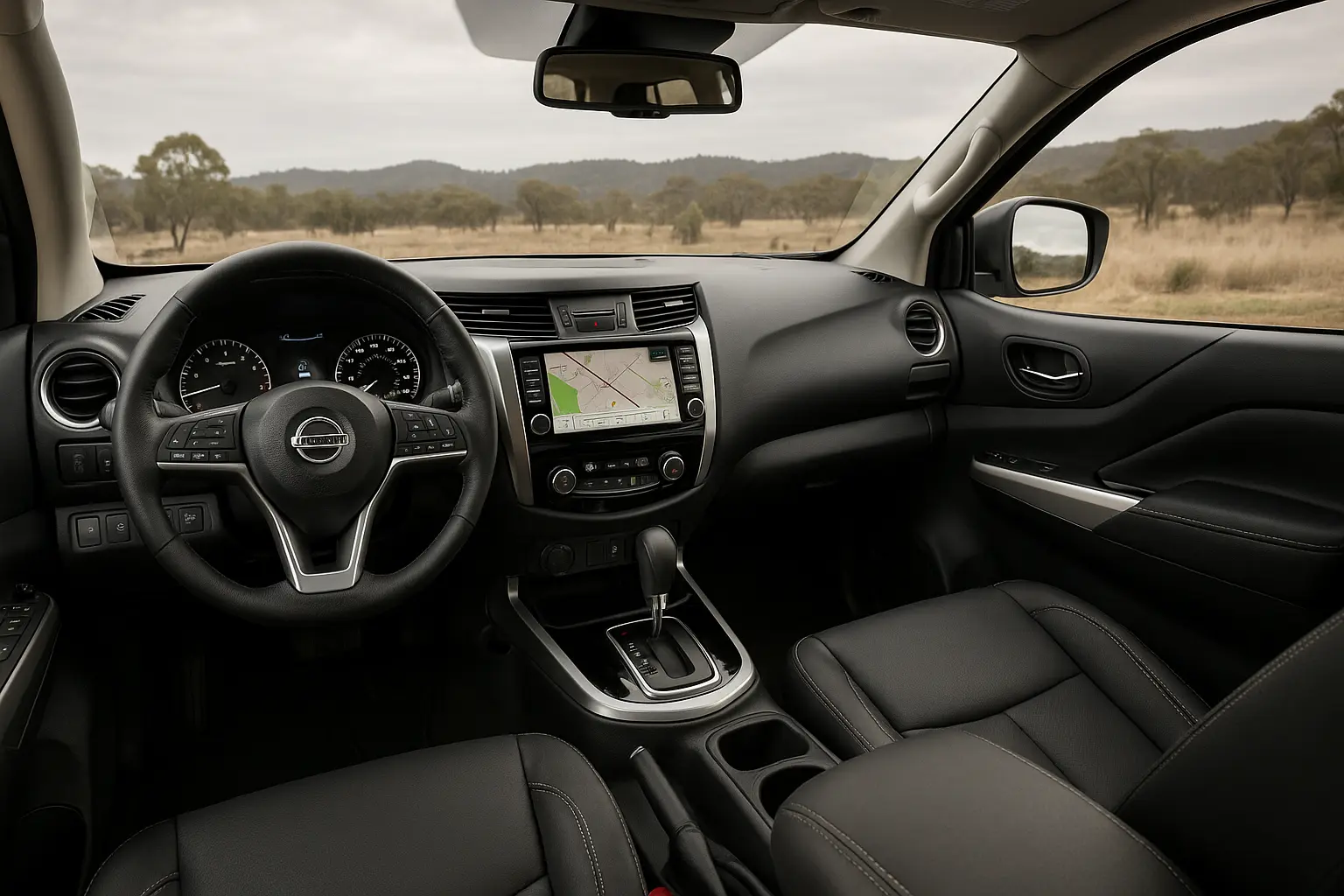Buying a car is one of the biggest financial decisions most Australians make, right after purchasing a home. While the excitement of driving away in a new or used vehicle is unmatched, the reality of paying for it often comes down to one critical step: financing. That’s where a car loan calculator becomes your best friend.
In Australia, thousands of buyers turn to car loans every year to make vehicles more affordable through manageable repayments. But with so many lenders, interest rates, and finance options, it can feel overwhelming to figure out what you’ll actually pay. That’s why using a car loan calculator isn’t just convenient — it’s essential.
This comprehensive guide will help you understand how car loan calculators work, what factors influence repayments, and how you can use them to compare finance options before you commit.

Why Use a Car Loan Calculator in Australia?
A car loan calculator is a simple yet powerful tool that allows you to:
Estimate your monthly, fortnightly, or weekly repayments.
Compare loan options across different lenders.
Understand how interest rates and loan terms affect your total cost.
Plan your budget with accuracy before you sign any paperwork.
Avoid nasty surprises down the track.
Instead of relying on guesswork, you can enter details like loan amount, term, and interest rate, and instantly see how much you’ll need to repay. For many Australians, this upfront clarity prevents costly mistakes when shopping for car finance.
Key Components of a Car Loan Calculator
When you use a car loan calculator, you’ll typically enter several inputs. Each one has a big impact on your repayments:
Loan Amount
The amount you borrow depends on the car’s price, minus any deposit or trade-in value. Borrowing less reduces both your repayments and total interest paid.
Interest Rate
Even a small difference in rates can add thousands of dollars to your total repayment. Always compare lender offers — a rate of 6% vs. 9% on a $40,000 loan can mean a difference of over $4,000 across five years.
Loan Term
Common terms range from three to seven years. Longer terms mean lower monthly repayments but higher total interest. Shorter terms save money overall but require higher repayments.
Repayment Frequency
Weekly, fortnightly, or monthly repayments are usually offered. Choosing fortnightly often means you make an extra month’s repayment per year, helping you pay off your loan faster.
Fees and Charges
Upfront fees, ongoing account charges, and early repayment penalties can all add to your cost. Always factor them into your calculations.
Example: How a Car Loan Calculator Works
Imagine you’re buying a Toyota RAV4 Hybrid priced at $50,000. You trade in your old car for $10,000 and plan to borrow $40,000.
Loan Term: 5 years
Interest Rate: 7% p.a.
Repayment Frequency: Monthly
Using a calculator:
Estimated Monthly Repayment: ~$792
Total Interest Paid: ~$7,500
Total Loan Cost: ~$47,500
Now, if you change the term to 3 years, repayments rise to ~$1,240 per month, but interest drops to ~$4,400, saving you over $3,000.
Types of Car Loans in Australia
When using a calculator, it’s important to know the type of loan you’re considering. Different finance products affect repayments differently.
Secured Car Loan
The car is used as collateral, giving lenders more security and usually lower interest rates. Ideal for new cars.
Unsecured Personal Loan
No collateral required, but higher interest rates apply. Useful for older or second-hand cars.
Novated Lease
Common for employees with salary packaging. Your employer leases the car on your behalf, and repayments come from pre-tax salary.
Dealer Finance
Convenient but sometimes more expensive. Always compare with bank or credit union offers.
Chattel Mortgage (for Business Use)
Popular with small business owners and sole traders. Allows GST claims and asset depreciation benefits.
Factors That Affect Car Loan Repayments
Credit Score
Lenders in Australia check your credit file. A good score means lower rates; a poor score may limit your options.
Deposit Size
A larger upfront payment reduces how much you need to borrow, saving on interest.
Loan Term
As shown in our example, shorter terms reduce total costs.
Balloon Payment
Some loans offer a balloon (a lump sum due at the end). This lowers monthly repayments but increases long-term cost.
Vehicle Type
New cars often qualify for lower rates than used cars. Electric vehicles (EVs) may also get preferential “green car loan” rates.
Using a Car Loan Calculator to Compare Options
Let’s say you’re deciding between two lenders:
Bank A: 6.5% interest, no ongoing fees.
Finance Company B: 5.9% interest, but $20 monthly account fee.
A calculator reveals that while Company B looks cheaper, over five years the monthly fee adds $1,200 to the loan — wiping out the interest advantage. Without running the numbers, you might assume the lower rate is better, but calculators highlight the hidden costs.
Car Loan Calculator vs. Dealer Quotes
Dealerships often advertise “$199 per week drive-away” deals. While they look attractive, calculators allow you to break them down:
How long is the loan term?
What’s the balloon payment?
Is the advertised rate genuine, or are fees built into the price?
By entering the numbers yourself, you can cut through the marketing spin and see the real cost.
Online Tools: What to Look For
Not all car loan calculators are created equal. A good one should:
Allow flexible inputs (loan amount, term, interest rate, frequency).
Show both repayments and total interest paid.
Factor in fees if possible.
Provide comparison between multiple scenarios side by side.
Banks, credit unions, and independent finance websites in Australia typically provide free calculators.
Practical Tips for Using Car Loan Calculators
Always test different interest rates. Lenders may offer you a range depending on your profile.
Try shorter loan terms to see how much you save in interest.
Switch repayment frequency to fortnightly — small change, big savings.
Add realistic fees for a true picture.
Compare across at least three lenders.
Benefits of Comparing Car Finance Options
Car loan calculators make comparisons easier, but what should you actually be looking for?
Interest Rates: Compare fixed vs. variable. Fixed offers certainty; variable can change over time.
Fees: Application, account-keeping, early repayment penalties.
Loan Features: Ability to make extra repayments without penalty.
Flexibility: Can you pay off the loan early? Can you refinance if needed?
The goal is to find a balance between affordable repayments and long-term savings.
Mistakes Australians Often Make With Car Loans
Focusing only on monthly repayments. Lower isn’t always better if it means paying thousands more in interest.
Ignoring fees. Small charges add up.
Not checking credit score. You may qualify for better rates than you think.
Falling for dealer promotions. Always run the numbers independently.
Borrowing too much. Just because you can borrow $60,000 doesn’t mean you should.
Car Loan Repayment Strategies
A calculator helps you estimate repayments, but how you manage the loan can save even more:
Make Extra Repayments: Even small amounts reduce interest.
Round Up Payments: Paying $810 instead of $792 speeds up repayment.
Choose Fortnightly Over Monthly: Results in one extra repayment each year.
Avoid Balloon Payments: Unless you’re sure you can pay or refinance later.
How Car Finance Impacts Long-Term Ownership Costs
It’s easy to forget that financing is part of your car’s true cost of ownership. In addition to fuel, insurance, and servicing, your loan repayments (and interest) significantly influence affordability. Using calculators helps you see whether that shiny SUV will still fit comfortably into your budget three years down the track.
Car Loan Calculator and EV Finance in Australia
As electric vehicles grow in popularity, lenders are introducing green car loans with discounted rates for EVs and hybrids. Car loan calculators help highlight the savings:
Lower rates mean cheaper repayments.
Some lenders waive fees for EV loans.
You can compare petrol vs. EV ownership costs side by side, factoring finance into the equation.
This makes calculators especially important for Australians considering the switch to electric cars.
The Future of Car Loan Calculators
With AI and fintech innovation, calculators are becoming smarter:
Real-time comparison across lenders.
Personalised results based on your credit score.
Integration with car dealerships for instant finance quotes.
Mobile apps that update with interest rate changes.
For Australian buyers, this means even more transparency and control over the car-buying journey.
Conclusion
A car loan calculator isn’t just a handy gadget — it’s a financial safety net. By running the numbers before committing, Australians can avoid over-borrowing, uncover hidden costs, and secure the best deal for their circumstances. Whether you’re buying your first hatchback, upgrading to a family SUV, or exploring the world of EVs, a calculator empowers you to make smarter decisions.
When it comes to financing your next vehicle, don’t leave it to chance. Take a few minutes to enter your details, compare options, and plan repayments. Your budget — and your future self — will thank you.
Leave a comment
Your email address will not be published. Required fields are marked *




















